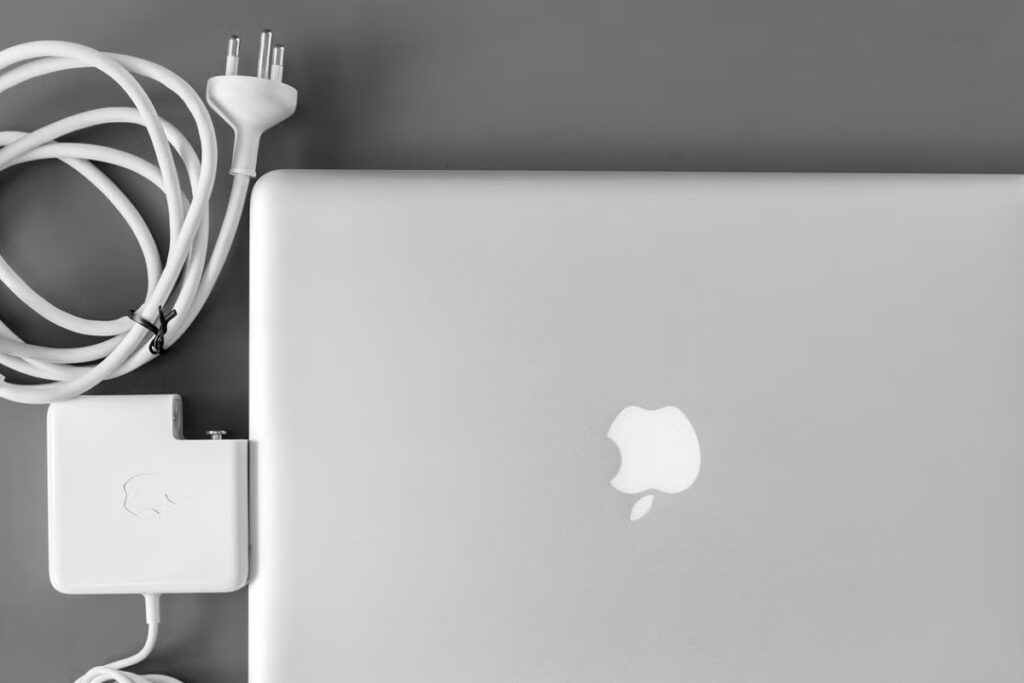Choosing the correct charger for your MacBook is about more than just plugging it in and turning it on; it’s also about protecting your device and optimizing its performance. Inappropriate chargers can cause delayed charging, overheating, and long-term damage to the battery. Apple’s product lineup continues to expand, and different MacBook models require unique connection types, power outputs, and safety requirements. Whether you’re looking for a new charger or aren’t sure if your current charger is compatible, it’s essential to know what makes a charger compatible. This article plans the key points to consider before plugging in, allowing you to charge your device with confidence every time.
What are the key factors for compatibility?
Connector Type – MagSafe and USB-C
MacBooks have two primary charging options: MagSafe and USB-C. Older models (pre-2016) typically use MagSafe 1 or 2 connectors, which attach magnetically to the device. Newer MacBooks, particularly the M1 and M2 series, utilize USB-C charging, which enables fast data and power transfer through a reversible connection. Knowing your MacBook model will help you choose the right type of port. Using the wrong connector will not only fail to fit but also not work. Ensure the charger is compatible with your MacBook’s port and avoid using the incorrect connection. USB-C chargers offer greater flexibility, but must still meet specific electrical and safety standards.
Power and Power Delivery
Each MacBook model requires a certain amount of power to charge effectively. For example, a MacBook Air may require a 30W charger, while a 16-inch MacBook Pro may require 96W or more. Using a lower-wattage MacBook charger may result in slower charging or no charging at all under heavy use. Always follow Apple’s recommended wattage ratings; however, intelligent power management sometimes allows higher-wattage chargers to work safely with lower-wattage models. USB-C Power Delivery (PD) compatibility, which ensures optimal voltage and current levels during charging, is also essential for USB-C chargers. Stick with chargers that clearly state that they support PD.
Certified and Safe Chargers
Safety certifications are essential when choosing a charger for your MacBook. Apple chargers are certified to UL, CE, and FCC standards and have undergone rigorous quality and safety testing. Third-party chargers should be MFi (Made for iPhone/iPad/Mac) certified or clearly marked as Apple-compatible and meet regulatory requirements. Avoid unbranded or suspiciously cheap chargers, as they often lack essential features such as overvoltage protection, temperature control, and surge resistance. These defects can lead to overheating, battery damage, or even device failure. Before using a new charger, always check its label, read product reviews, and consider the brand’s reliability. Investing in a certified charger eliminates risks while ensuring long-term reliability and safety.
How to Know If Your Charger Works

Identify Your MacBook Model
Before checking charger compatibility, identify your specific MacBook model. Click the Apple logo in the upper-left angle of the screen, then select “About This Mac.” This will list the model name and year of your MacBook, such as “MacBook Pro (13-inch, 2020).” Use this information from Apple’s official support website to determine the correct charger type and wattage. You can also check the bottom cover of your MacBook or the original packaging. Matching your charger to your model ensures accurate voltage and connection compatibility. Don’t make assumptions—even small changes in the model can cause serious compatibility issues.
Check the Charger Label
Each Apple charger has a label on the port or on the charger itself. This label contains important information, such as output power (61W), voltage, and amperage. Compare this information to the required specifications for your MacBook to ensure compatibility. Ensure your USB-C charger displays “USB-C Power Delivery” or “PD” on the label. When using a third-party charger, check for Apple compatibility marks, certification marks, and the brand’s reputation to ensure compatibility. Avoid using chargers that lack technical information; they are likely unregulated and potentially hazardous. Checking this label ensures that the charger won’t degrade performance or damage the battery over time.
Checking Charging Performance
Connect the mount to your MacBook and check for the charging icon in the top menu bar to ensure it’s working correctly. Your MacBook should detect the charger within a few seconds. If the battery charges slowly, unevenly, or not at all within a few minutes, the charger may be defective or not provide sufficient power. To check the input power of USB-C devices, go to System Information > Power in macOS. If the power displayed is lower than expected, your charger may not be meeting the power requirements. Also, check the charger for overheating. These quick tests can help ensure that your charger is working safely and efficiently.
Common Mistakes and Safety Precautions
How to Avoid Common Mistakes
One of the most common mistakes is using a charger with the wrong wattage or connection type. This can lead to ineffective charging or increased stress on the device. Another common mistake is using third-party chargers, which may not meet safety requirements. Sometimes, users overlook cable compatibility—using a faulty or low-quality connection can slow down charging or cause issues. Always check the specifications of the charger and cable to ensure they meet the requirements of your MacBook. Don’t mix chargers from different devices if their specifications don’t match. Before buying, double-check the product description and avoid making assumptions. Careful verification can save you money on repairs or replacements.
Third-Party Charger Safety
Third-party chargers can be safe if reputable companies make them and meet Apple’s technical and safety standards. Look for UL, FCC, RoHS, or CE certifications, and make sure the charger states that it is compatible with your MacBook. Brands like Anker often produce high-quality chargers that serve as safe alternatives to original Apple models. Avoid using unknown or unbranded chargers, especially if they are incredibly inexpensive. Low-quality options can lead to overcharging, overheating, or damage to the battery. Before making a purchase, read online reviews and review the warranty terms. Safety and quality are key to protecting your MacBook and avoiding future charging issues.
Maintenance and Operation Tips
Avoid bending or severely bending the cord to extend the life of your charger and ensure its safe use. Instead of pulling on the cord, grasp the connector and unplug it from the outlet. Store the charger in a cool, well-ventilated area; do not cover it with clothing or blankets, as this can cause overheating. Regularly inspect it for burns or scratches and replace it immediately if any are found. To safeguard a secure connection, use a soft brush to remove dust from the ports. To avoid damage to the internal wires, keep the charger loosely wrapped when not in use. These simple guidelines promote the longevity, functionality, and safety of your charger.
Conclusion
The compatibility of a charger with your MacBook depends on several critical criteria, including the correct connection type, wattage, and safety certification. Mistakes in any of these areas can lead to ineffective charging or, worse, damage to your MacBook. You can ensure reliable charging by identifying your device model, checking the label, and monitoring its performance. To extend the life of your charger, avoid low-quality, uncertified products and follow these recommendations. These guidelines will help you confidently choose the best power source for your MacBook, whether you’re replacing a lost charger or trying out an old one.

